
The Lawson Salt Cave
A natural, drug-free & non-invasive solution
for balance and healing

The Lawson Salt Cave
A natural, drug-free & non-invasive solution
for balance and healing
SALT THERAPY EXPLAINED
All you need to do is relax and breathe!
Salt Therapy uses a custom built medical device called a halogenerator that disperses microscopic medical grade salt particles into the air. The proposed mechanism of action is that once it lands on the skin and is inhaled into the airways and lungs, the magnesium absorption occurs throughout the whole body and can help normalise your respiratory function. Breathing becomes easier, allergies are reduced and asthma is less problematic. Did you know that 89% of the population is deficient in magnesium!
Suitable for babies, children and adults, salt therapy can help soothe a long list of skin, respiratory, and lifestyle conditions.
The benefits of Salt Therapy are numerous
Salt Therapy is not just for those with breathing issues. Young teens and children can benefit as the salt therapy treatment itself is very relaxing and will give you a sense of calm and help relieve stress and fatigue. The room is a high negative ion environment, negative ions are good for us, it’s what we find in nature, especially at the beach and close to bush areas. It helps boost the immune system, give you a better night’s sleep and give you an all-over feeling of wellness
THE SALT CAVE
What you can expect
- 35 minutes of relaxing salt therapy (45min total)
10 minutes to get settled and enjoy enjoy a relaxing herbal tea afterwards
- Two relaxing recliner chairs and two cushions if you’re bringing your kids too
- Blankets are available for your comfort
- Comfortable attire suggested
TREATMENT OPTIONS & FEES
$35 per person
- Group $80 (family 4 max)
- 30 minutes Massage / Physiotherapy in Salt Room $110

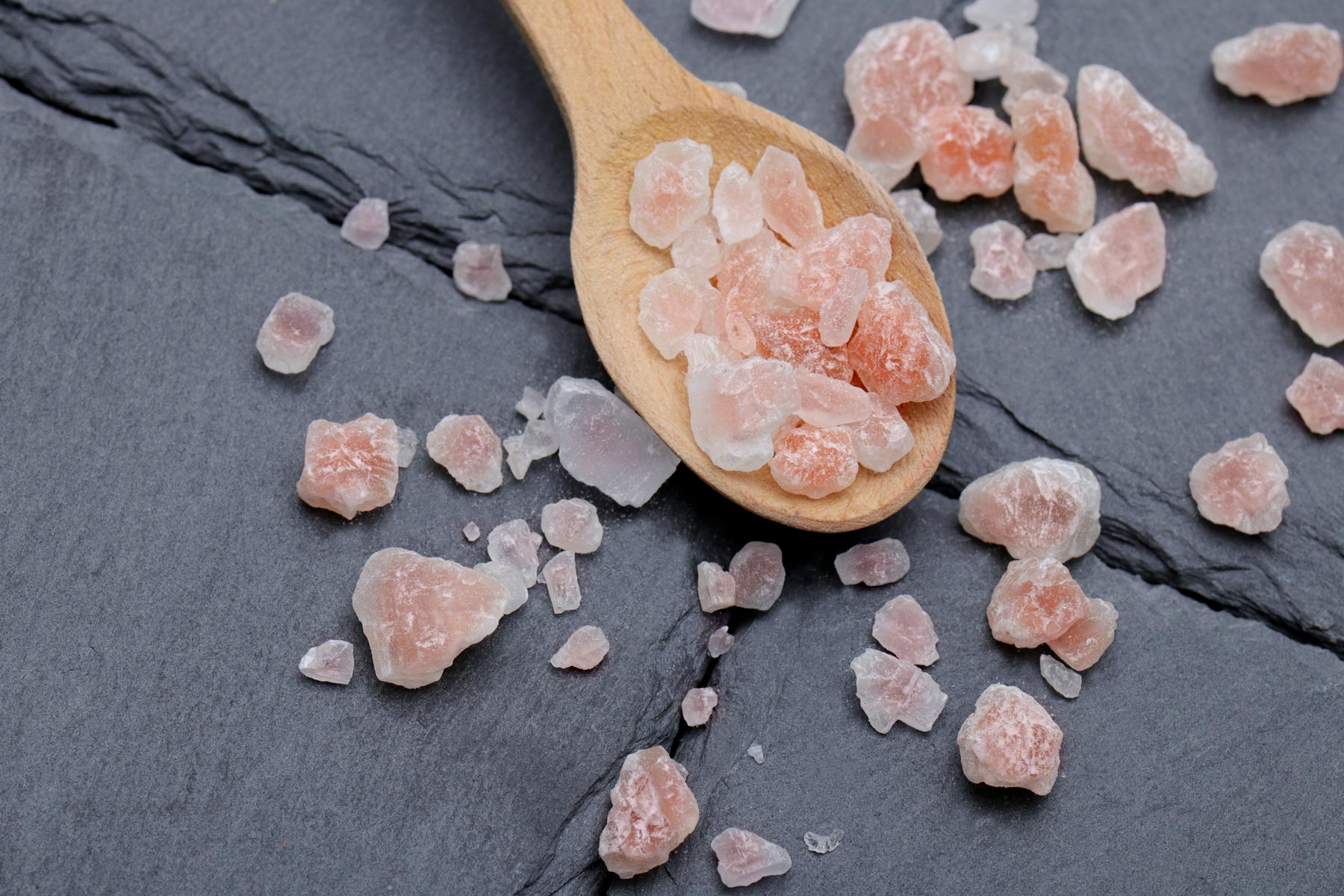
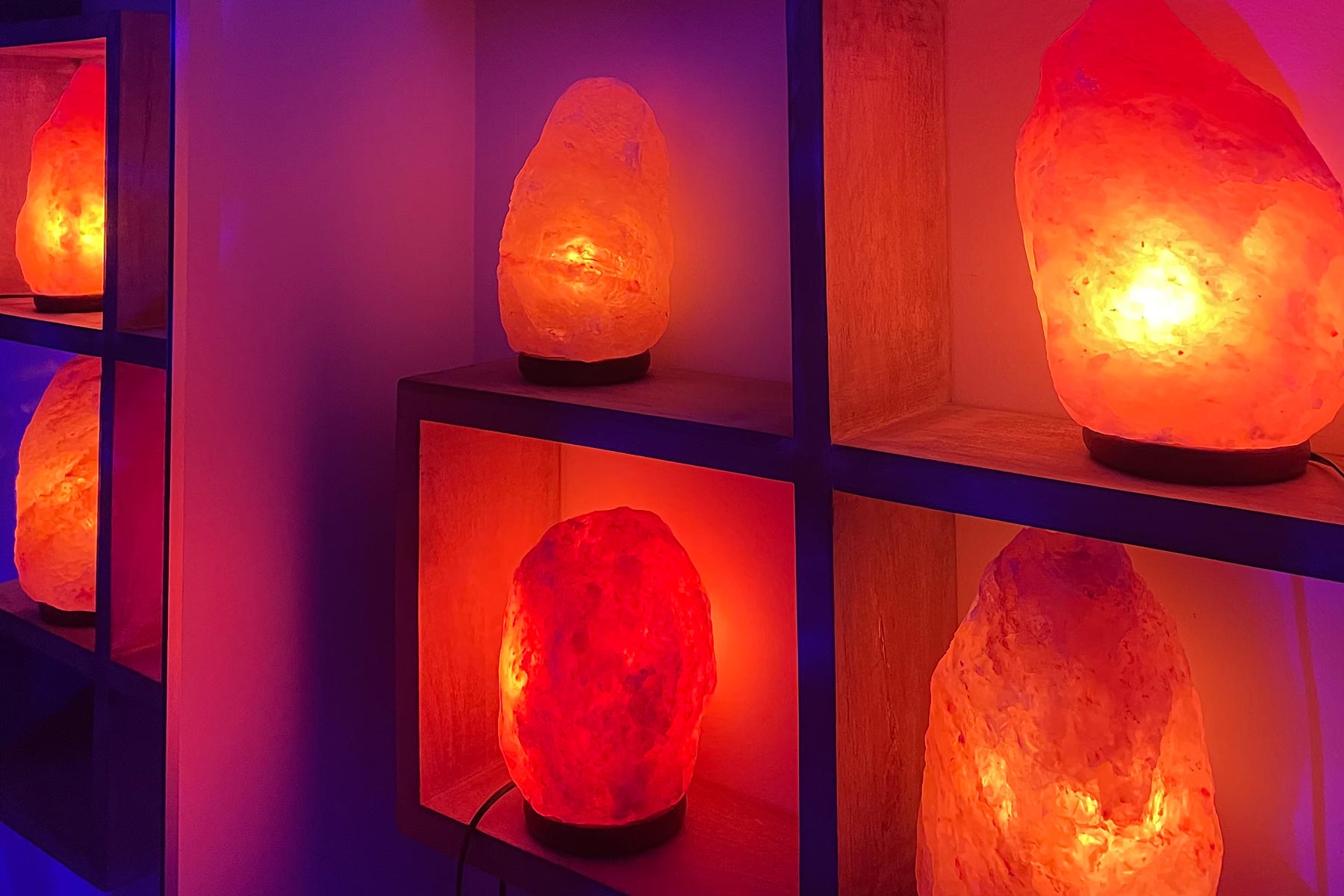
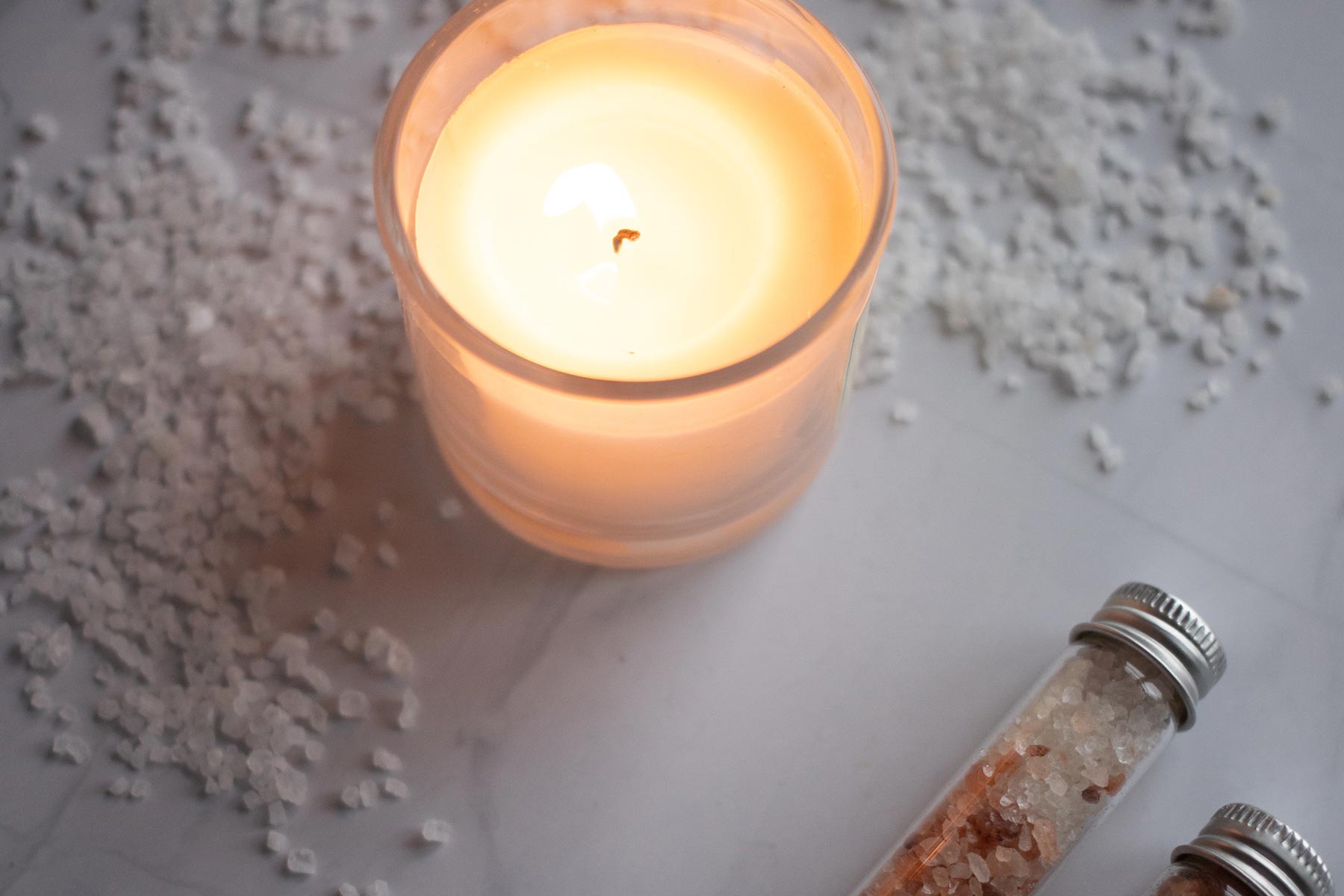

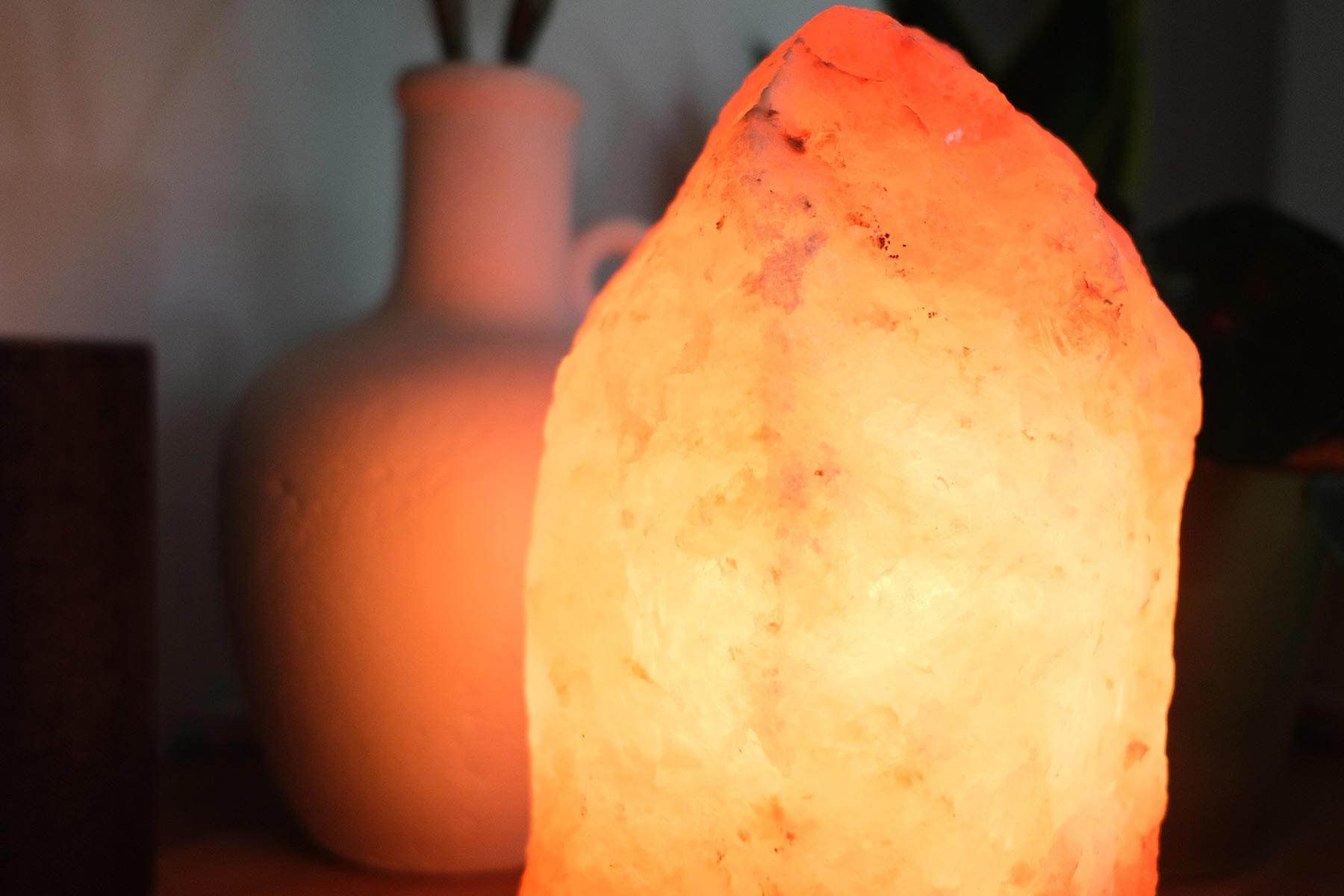
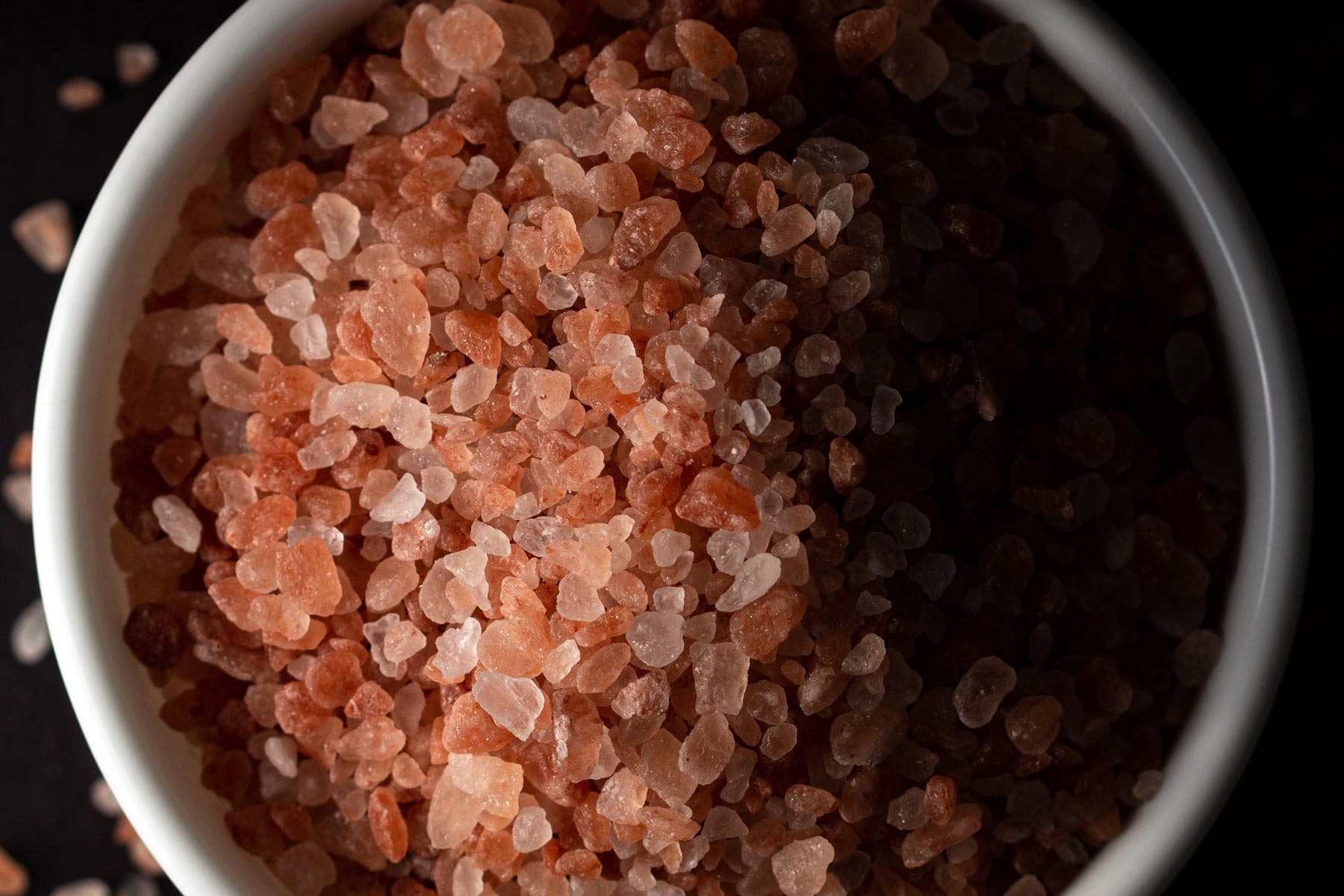
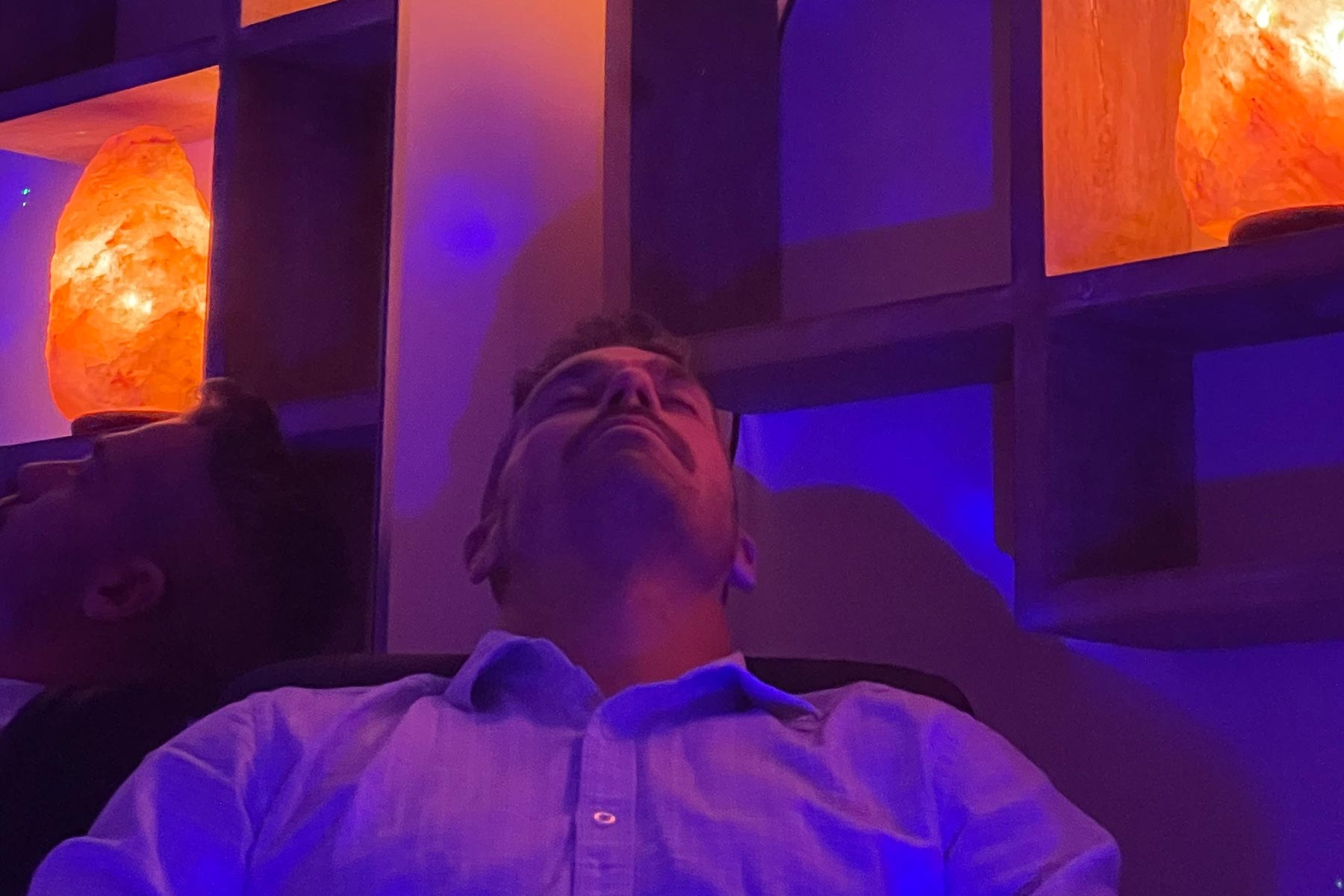
BOOK NOW
- Open by appointment, 8:00am-6:00pm Mon-Fri
- Call us on (02) 4759 1485 or fill out the contact form below with your details and we’ll be in touch.
CLINICAL RESEARCH
To be clear, salt therapy is an age-old natural practice, with profound health benefits to humans and animals alike. Each of the studies listed below confirms various aspects of salt therapy, such as:
Atmospheric salt aerosol ionizes the air: Ionizing air affects influenza virus infectivity and prevents airborne-transmission (2015)
“The observation that significantly higher numbers of rotavirus and CaCV particles were detected on the active ionizer compared to the inactive ionizer (~1500–3000 times), led to the conclusion that this technique can actively and efficiently collect viral particles from air.”
Halotherapy is antibacterial: Halotherapy–a new treatment of bacterial vaginosis (2004)
These are clinical trials, double-blind studies, citations and biomedical literature on Halotherapy, published under pubmed.org under The United States National Library of Medicine at the National Institutes of Health, as well as other reputable online medical publications.
“The analysis was made of clinical efficacy, some mechanisms of a therapeutic action and techniques of halotherapy used for the first time in the treatment of bacterial vaginosis. High efficacy, long-term after effect and advantages of halotherapy vs drug therapy are shown.”
Halotherapy on skin diseases: The efficacy of speleotherapy in atopic dermatitis in children (1994)
“During the treatment positive trends were observed in the patients’ dermatological status and immune homeostasis. A complete 6-24-month response was reported in 58%, partial in 20%, no response in 6.9% of patients. The method [speleotherapy] is recommended for treatment of atopic dermatitis.”
These are clinical trials, double-blind studies, citations and biomedical literature on Halotherapy, published under pubmed.org under The United States National Library of Medicine at the National Institutes of Health, as well as other reputable online medical publications.
List of Clinical Trials Proving the Efficacy of Salt Therapy
- Halotherapy in patients with vasomotor rhinitis after surgical treatment (2020)
“Halotherapy has shown high efficiency and safety, therefore it is advisable to use it in clinical practice along with generally accepted treatment regimens to reduce the drug load, including the need for decongestants. In addition, halotherapy contributes to an earlier restoration of the functional state of the nasal cavity.” - Halotherapy for Chronic Respiratory Disorders: From the Cave to the Clinical (2020)
“HT has been found to have a positive effect on patients suffering from chronic respiratory diseases, improving mucociliary elimination and lung function in common chronic respiratory diseases and also HRQoL. Currently, no official guidelines exist on the use of HT in the form of salt rooms (halo chambers) or dry powder inhalers, but evidence exists for its use as a possible adjuvant therapy. More structured research in the form of randomized clinical trials is required.” - Optimization of pathogenetic therapy in patients with chronic obstructive lung disease (2020)
“The proposed complex therapy of COPD patients with the inclusion of the combined drug ambroxol and acetylcysteine and halotherapy sessions contributes to the improvement of the quality of life of patients.” - Halotherapy – benefits and risks (2018)
“The mechanisms of action of halotherapy are manifold: mucolytic, antibacterial, anti-inflammatory, immunomodulating, hyposensitizing. Halotherapy is a natural and safe treatment without serious side effects. This method is very beneficial for the overall wellness of a person by improving function and removing toxic substances from respiratory system, improving the function and appearance of the skin, boosting the immune system and reducing stress. The positive results from the therapy last for more than a year. The possibility to combine it with other physical therapy methods, as well as with pharmacological therapy, makes halotherapy a treatment of choice in mild and moderate forms of bronchial asthma, chronic obstructive bronchitis, post-pneumonia states and various other respiratory and skin diseases.” - Comparative analysis of airborne bacteria and fungi in two salt mines in Poland (2017)
“Our results showed that microorganisms recorded in the air samples are not a threat to workers, tourists or patients. Neither pathogens nor potentially pathogenic microorganisms, listed as BSL-2, BSL-3 or BSL-4, were detected.” - The Effect of Salt Space on Clinical Findings and Peak Expiratory Flow in Children with Mild to Moderate Asthma: A Randomized Crossover Trial (2017)
“This study showed the significant effect of salt therapy on PEF rate of the patients in the second week. However, further studies with different frequency and time of salt therapy on respiratory disorders are recommended.” - The promising directions for the further development of halotherapy in pediatric medicine (2016)
“Halotherapy has been shown to produce well apparent anti-inflammatory, draining, mucolytic, immunomodulatory, and sanogenetic action. The high effectiveness of halotherapy for the prophylactic application in the frequently ill children is emphasized together with the possibility of its extensive use for the treatment of acute respiratory diseases and combined medical rehabilitation of the children presenting with chronic ENT disorders, respiratory and skin diseases.” - Efficiency of controlled halotherapy in rehabilitation of patients with occupational lung diseases (2016)
“Based on complex evaluation of clinical, functional and laboratory methods, the authors assessed efficiency of controlled halotherapy in patients with occupational COLD. Considerable improvement was seen: for mild COLD– in 40% of cases, for moderate COLD – in 30%, with general efficiency for these patients of 90 and 85% respectively. Analysis of the results obtained enables to evaluate controlled halotherapy as an effective method of rehabilitation and prevention in occupational COLD patients.” - Halotherapy as asthma treatment in children: A randomized, controlled, prospective pilot study (2016)
“Our pilot study suggests that salt room with halogenerator, may have some beneficial effects in mild asthmatic children.” - Evaluation of Halotherapy as Asthma Treatment in Children (2016)
“Provocative concentration causing a 20% fall in the forced expiratory volume at one second (PC20-FEV1) as assessed by Methacholine Challenge Test [ Time Frame: Study visit 1,2 (7 wks) ]” - Ionizing air affects infuenza virus infectivity and prevents airborne-transmission (2015)
“The observation that significantly higher numbers of rotavirus and CaCV particles were detected on the active ionizer compared to the inactive ionizer (~1500–3000 times), led to the conclusion that this technique can actively and efficiently collect viral particles from air.” - Halotherapy in Patients with Cystic Fibrosis: A Pilot Study (2015)
“HT is associated with improvement in symptoms of sinus disease in CF, and should be explored as an adjunct treatment for CF patients” - Theoretical basis and clinical benefits of dry salt inhalation therapy (2015)
“Due to the greater osmotic pressure the inhaled salt diminishes the oedema of the bronchial mucosa, decreases its inflammation, dissolves the mucus, and makes expectoration easier and faster (expectoration of air pollution and allergens will be faster, too). It inhibits the growth of bacteria and, in some case, kills them. Phagocyte activity is also increased. It has beneficial effect on the well being of the patients, and a relaxation effect on the central nervous system. It can prevent, or at least decrease the frequency of the respiratory tract inflammations. It produces better lung function parameters, diminishes bronchial hyperreactivity, which is the sign of decreasing inflammation. Its beneficial effect is true not only in inflammation of the lower respiratory tract, but also in acute or chronic upper airways inflammations. According to the international literature it has beneficial effect for some chronic dermatological disease, too, such as psoriasis, pyoderma and atopic dermatitis.” - Surveys on therapeutic effects of “halotherapy chamber with artificial salt-mine environment” on patients with certain chronic allergenic respiratory pathologies and infectious-inflammatory pathologies (2014)
“The assessment of results achieved in the investigated patients with bronchial asthma, chronic bronchitis and chronic obstructive bronchopneumopathy, after a specific halotherapy treatment, indicates the triggering of an anti-inflammatory (including anti-allergic mechanisms) mechanism and a decreasing trend of the inflammatory process.
Data acquired indicate a decrease in the body’s sensitiveness and in infectious-inflammatory process in patients with bronchial asthma after HT treatment, and it also proves the need to extend the period or to repeat the halotherapeutic treatment.” - Speleotherapy – modern bio-medical perspectives (2014)
“Speleotherapy – a special form of climatotherapy – uses certain conditions specific to caves and salt-mines to treat several medical conditions, especially respiratory and skin-related… Results of this survey indicates that speleotherapy induces changes in morphology and protein expression of in vitro lung and skin fibroblasts, and these changes support the therapeutic effects of speleotherapy.” - Salt caves as simulation of natural environment and significance of halotherapy (2014)
“Besides the health benefits, people do not have free time for rest and activities in clean air; moreover, stress is inseparable from everyday life, and for that reasons salt caves become places that help to support a proper lifestyle.” - Saltwater Solution Offers Novel Therapy for Cystic Fibrosis Patients (2013)
Related pubmed journal (2013)
“Chronic administration of hypertonic saline (7% solution) was demonstrated in 2006 to significantly decrease the rate of pulmonary exacerbations.” - Double-blind placebo-controlled randomized clinical trial on the efficacy of Aerosal® in the treatment of sub-obstructive adenotonsillar hypertrophy and related diseases (2013)
“Aerosal® halotherapy can be considered a viable adjunct, albeit not a replacement, to conventional medical treatment of sub-obstructive adenotonsillar syndrome and related conditions. Further research is however needed to improve ATH treatment.” - Halotherapy: From ethnoscience to scientific explanations (2013)
“The analysis of these practices demonstrates their scientific validity from the current biochemical and biophysical perspective (NaCl aerosols and of NaCl nanodispersion). Parts of these practices are taken over by a series of recent halotherapeutic proceedings, with reliable scientific and technological bases.” - Clinical Abstract for Using Salt Therapy in Respiratory and Skin Disorders (2012)
Related Abstract (2012)
“The anti-inflammatory and healing effects of salt therapy – aerosol salt therapy and salty baths – on skin diseases such as psoriasis, eczema, neurodermatitis, chronic rashes, burns and wounds, was another interesting subject in the symposium.
Bronchial obstruction is known as a frequent symptom of gastroesophageal reflux disease (GERD) and rock-salt aerosols is considered one of the most effective methods of treatment. The alkali properties of ionic salts also have positive effects on the irritated esophagus and gastric mucosa.
This symposium underlined the many uses of salt therapy in respiratory conditions, skin disorders and in balneotherapy.” - Hypertonic Saline and Acute Wheezing in Preschool Children (2012)
“Using HS inhalations significantly shortens LOS and lowers AR in preschool children presenting with an acute wheezing episode to the emergency department.” - Halotherapy – A possible method to enhance airway treatment on patients with obstructive pathology (2012)
“Correlating both the improvements of spirometry parameters and the scores from the QoL questionnaire we found that the aerosols from a dry salt inhaler (home halotherapy) seems to be efficient versus placebo when added to regular bronchodilatatory medication but further studies are necessary.” - The use of halotherapy for the health improvement in children at institutions of general education (2012)
“The application of halotherapy was shown to produce well-apparent anti-inflammatory, draining, and sanogenic effects. Observations during 1, 3, 5, and 12 month follow-up periods confirmed the persistence of prophylactic and therapeutic effects of salt therapy. The results of the study were used to develop differential schemes of halotherapy taking into consideration the initial conditions of the children.” - Impact Assessment of Saline Aerosols on Exercise Capacity of Athletes (2012)
“After the halotherapy treatment, there was an increase in the respiratory volumes (VC, MEVS, V max., PEF) for all subjects investigated. There was also an increase in the percentage of subjects with excellent respiratory index. As concerns the breathing system, there was an improvement in the breathing mechanics, as well as an increase in the oxygen saturation of arterial blood and in the resistance to apnea and hypoxia. Due to the recovery, which took place in mediums with saline aerosols, the breathing was more effective, both regarding he gaseous exchanges, and using tissue-level oxygen. The assessment of standard cardiovascular system during effort, the Martinet test, indicated better values during the final tests, and the cardiovascular assessment tests are indicators of body adaptation to effort and only indirectly of the effort capacity, allowing to assess the effectiveness of training methods used for a certain amount of time. We have also noticed a decrease in the heart rate and breathing rate during the training session effort, which was possible due to the cardiovascular adaptation and regulation of athlete’s organism.” - Hypertonic saline improves the LCI in paediatric patients with CF with normal lung function (2010)
“The LCI, but not spirometry was able to detect a treatment effect from HS inhalation in patients with CF with mild disease and may be a suitable tool to assess early intervention strategies in this patient population. Clinical trial number NCT00635141” - Halotherapy for Treatment of Respiratory Diseases (2009)
“The effect of HT was evaluated in 124 patients (pts) with various types of respiratory diseases. The control group of 15 pts received placebo. HT course consisted of 10-20 daily procedures of 1 hour. HT resulted in improvements of clinical state in the most of patients. The positive dynamics of flow-volume loop parameters and decrease of bronchial resistance measured by bodyplethysmography were observed. The changes in control group parameters after HT were not statistically significant. The specificity of this method is the low concentration and gradual administration of dry sodium chloride aerosol. Data on healing mechanisms of a specific airdispersive environment of sodium chloride while treatment the respiratory diseases are discussed.” - Protective effect of bronchial challenge with hypertonic saline on nocturnal asthma (2008)
“Inhalation of hypertonic saline (HS) causes bronchoconstriction in asthmatic subjects. Repeated inhalation of HS leads to substantially reduced bronchoconstriction, known as the refractory period.” - Nebulized hypertonic saline solution for acute bronchiolitis in infants (2008)
“Current evidence suggests nebulized 3% saline may significantly reduce the length of hospital stay among infants hospitalized with non-severe acute viral bronchiolitis and improve the clinical severity score in both outpatient and inpatient populations.” - The effect of a dry salt inhaler in adults with COPD (2007)
“Dry salt inhaler therapy may prove to be a useful adjuvant therapy in COPD as far as effort tolerance and quality of life is concerned. However further studies are probably needed to exclude a placebo effect which could not be quantified under present circumstances.” - Halotherapy in controlled salt chamber microclimate for recovering medicine. (2007)
“Numerous research and wide experience of practical application confirm the efficacy and broad opportunities of HT usage as rehabilitation and preventive medicine in all kinds of medical and recovering establishments.” - Effect of dry sodium chloride aerosol on the respiratory tract of tobacco smokers (2006)
“Dry sodium chloride aerosol inhalations produce positive effect on the airways of tobacco smokers (versus placebo). DSCA relieves the main clinical signs of tobacco smokers (character of cough and sputum), improves local defense mechanisms and strengthens resistance of mucous membranes of tobacco smokers owing to decreased colonization activity of pathogenic microorganisms and increased SIgA.” - Air ionisation and colonisation/infection with methicillin-resistant Staphylococcus aureus and Acinetobacter species in an intensive care unit (2006)
“Ionisers may have a role in the prevention of Acinetobacter infections.” - Complementary and Alternative Medicine Therapies in Acne, Psoriasis, and Atopic Eczema: Results of a Qualitative Study of Patients’ Experiences and Perceptions (2006)
“Practitioners should be cognizant of the likely use of CAM [Complementary and Alternative Medicine Therapies] and its implications (including the potential for attenuation of psychologic morbidity) in their patients who have skin diseases.” - A daily nasal spray with saline prevents symptoms of rhinitis (2004)
“A daily nasal spray with saline can prevent nasal symptoms of common cold in a population of otherwise healthy adults.” - Halotherapy–a new treatment of bacterial vaginosis (2004)
“The analysis was made of clinical efficacy, some mechanisms of a therapeutic action and techniques of halotherapy used for the first time in the treatment of bacterial vaginosis. High efficacy, long-term after effect and advantages of halotherapy vs drug therapy are shown.” - Halotherapy in combined non-puncture therapy of patients with acute purulent maxillary sinusitis (2003)
“Halotherapy was found effective in the treatment of acute purulent maxillary sinusitis without puncture.” - Speleotherapy for asthma (2001)
“Three trials including a total of 124 asthmatic children met the inclusion criteria, but only one trial had reasonable methodological quality. Two trials reported that speleotherapy had a beneficial short-term effect on lung function.” - Effects of halotherapy on free radical oxidation in patients with chronic bronchitis (2000)
“Registration of luminol-dependent chemoluminescence of blood cells and iron-induced chemoluminescence of the serum was used to study generation of active oxygen forms and lipid peroxidation in patients with chronic bronchitis (CB). 49 patients with lingering CB showed inhibition of blood cell function and enhancement of lipid peroxidation. The addition of halotherapy to combined treatment of these patients promoted correction of the disorders and improvement of CB course.” - The use of the microclimate of artificial sylvinite speleoclimatic chambers in treating patients with chronic obstructive bronchitis (2000)
“As shown by improvement in clinical, immunological and morphological indices, blood biochemistry, sputum microscopy, spirometry, bronchoscopy findings, artificial sylvinite speleotherapy is effective in acute and purulent COB.” - Effectiveness of halotherapy of chronic bronchitis patients (2000)
“The chemoluminescence test in 49 patients with lingering inflammatory chronic bronchitis has revealed inhibition of generation of active oxygen forms in the whole blood, intensification of lipid peroxidation in the serum, depression of local immunity. Administration of halotherapy to the above patients results in correction of disturbances of free-radical oxidation, improves local immunity and clinical course of the disease.” - The scientific validation and outlook for the practical use of halo-aerosol therapy (2000)
“Clinical reasons are provided for application of halo-aerosol therapy for prevention, treatment and rehabilitation of patients with respiratory diseases.” - The use of the microclimate of artificial sylvinite speleoclimatic chambers in treating patients with chronic obstructive bronchitis (2000)
“As shown by improvement in clinical, immunological and morphological indices, blood biochemistry, sputum microscopy, spirometry, bronchoscopy findings, artificial sylvinite speleotherapy is effective in acute and purulent COB.” - Halotherapy in the combined treatment of chronic bronchitis patients (1999)
“Halotherapy proved to be a highly effective method in a complex sanatorium treatment of patients with chronic bronchitis. Its use promotes more rapid liquidation of clinical manifestations of disease, improves indices of vent function of lungs, especially those values that characterize bronchial conduction (volume of forced exhalations per second, index Tiffno), increases tolerance to physical load, normalizes indices of reduced immunity and leads to increasing the effectiveness of patient treatment in sanatorium.” - Ground-based speleo-climatic wards and the experience with their use in bronchial asthma (1999)
“The stay in ground wards brings great benefit for patients with bronchial asthma. Ground speleo-climatic wards are perspective in nonpharmacological treatment of patients with allergic respiratory diseases.” - The use of an artificial microclimate chamber in the treatment of patients with chronic obstructive lung diseases (1997)
“Halotherapy was used for sanatorium rehabilitation in 29 patients with chronic obstructive pulmonary diseases (chronic bronchitis and asthma). Significant positive effects of this method resulted in the improvement of the flow-volume parameters curve of lung function and in hypotensive effects on blood pressure. Halotherapy is recommended for use in patients suffering from chronic obstructive pulmonary diseases with hypertension or coronary heart disease.” - The effect of inhaling a dry powder of sodium chloride on the airways of asthmatic subjects (1997)
“We conclude that a suitably prepared dry powder of sodium chloride could potentially replace wet sodium chloride to assess bronchial responsiveness in patients with asthma, but further studies are required to establish the long-term stability of the dry powder preparation.” - Bronchial hyperreactivity to the inhalation of hypo and hyperosmolar aerosols and its correction by halotherapy (1996)
“18 bronchial asthma (BA) patients (12 with mild and 6 with moderate disease) were examined before and after halotherapy (HT) for airways reactivity using provocative tests with ultrasonic inhalations of purified water (UIPW) and hypertonic salt solution (HSS). Bronchial hyperreactivity (BHR) to UIPW and HSS before treatment occurred in 13 and 11 patients (72 and 69%, respectively). HT reduced BHR [bronchial hyperraeactivity] in 2/3 and 1/2 of the patients, respectively.” - The dynamics of the persistence characteristics of staphylococci under the action of the microclimate of a speleotherapy mine (1996)
“Clinical investigations have confirmed the capacity of speleotherapy to decrease the microbial contamination of the upper respiratory tract and to inhibit the persistence properties of staphylococcal microflora in children with respiratory allergosis, which seems to be the basis of the positive effect achieved by treatment with microclimate in a spelean pit.” - Halotherapy for treatment of respiratory diseases (1995)
“HT resulted in improvements of clinical state in the most of patients. The positive dynamics of flow-volume loop parameters and decrease of bronchial resistance measured by bodyplethysmography were observed.” - The use of halotherapy for the rehabilitation of patients with acute bronchitis and a protracted and recurrent course (1995)
“Halotherapy was used for rehabilitation in 25 patients with acute bronchitis of long-standing and recurrent types. The main therapeutic action was ensured by aerodispersed medium saturated with dry highly dispersed sodium chloride aerosol, the required mass concentration being maintained in the range of 1 to 5 mg/m3. Therapy efficacy was controlled through assessment of clinical, functional, immunological and microbiological findings. Metabolic activity values were taken into consideration as well. Positive dynamics of the function indices in the clinical picture resulted from elimination of pathogenic agents, control of slowly running inflammatory lesions and stimulation of some immune system factors. Favourable changes in metabolic activity were present: normalization of serotonin excretion, marked decrease of unbalance in lipid peroxidation-antioxidant system.” - Halotherapy for treatment of respiratory diseases (1995)
“The effect of HT was evaluated in 124 patients (pts) with various types of respiratory diseases. The control group of 15 pts received placebo. HT course consisted of 10-20 daily procedures of 1 hour. HT resulted in improvements of clinical state in the most of patients.” - The efficacy of speleotherapy in atopic dermatitis in children (1994)
“During the treatment positive trends were observed in the patients’ dermatological status and immune homeostasis. A complete 6-24-month response was reported in 58%, partial in 20%, no response in 6.9% of patients. The method [speleotherapy] is recommended for treatment of atopic dermatitis.” - The efficacy of speleotherapy in salt mines in children with bronchial asthma based on the data from immediate and late observations (1993)
“Speleotherapy courses noticeably diminished broncho-obstructive syndrome, improved pulmonary ventilation. The improvement proved stable in the majority of the patients. It is recommended to include speleotherapy in salt mines into combined rehabilitation treatment of pediatric asthmatics.” - The effect of verapamil on external respiratory function in bronchial asthma patients during high-altitude speleotherapy (1990)
“Speleotherapy was found to initiate positive shifts in the external respiration function whereas verapamil hydrochloride to potentiate the observed beneficial rearrangement in asthma patients.” - The use of a sodium chloride aerosol in the combined treatment of patients with bronchial asthma and obstructive bronchitis (1990)
“The authors propose a method of complex treatment of patients with bronchial asthma and chronic obstructive bronchitis using a highly disperse ionizing sodium chloride aerosol. It [sodium chloride aerosol] proved more effective in comparison with traditional methods of treatment. Availability and simplicity of this method make it possible to use it widely in out and inpatient conditions.” - Effect of the microclimate of salt mines on T- and B-lymphocyte function in bronchial asthma patients (1989)
“A study of 55 patients with bronchial asthma revealed a reduction of the relative number of T-lymphocytes and their IgA content. The changes were most pronounced in patients during the phase of unstable remission of the disease. Disorders of the T- and B-system of lymphocytes were associated with an increased number of cortisol-resistant lymphocytes. After a course of speleotherapy one could observe an increase of the number of T-lymphocytes and their functional activity, normalization of the number of B-lymphocytes, increase of the level of IgA, reduction of the IgM content and of the relative content of cortisol-resistant lymphocytes fraction.” - Speleotherapy: a special kind of climatotherapy, its role in respiratory rehabilitation (1986)
“A sharp and long-lasting clinical improvement and a significant recovery from airway obstruction could be observed in the overwhelming majority of patients. It is established that the microclimate of some caves can beneficially affect these disorders, but the cave should be considered as an optimal environment for complex respiratory rehabilitation.”
We hope you found the information above useful. Please contact us if you have any questions.


